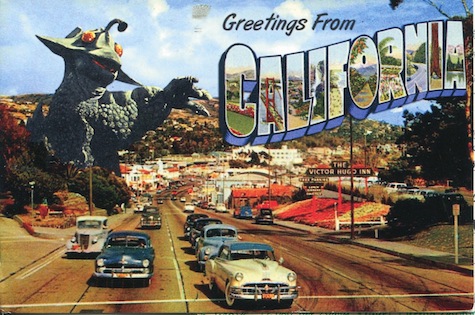I have had the great privilege in my life of being guided through travel by natives. When I first came to New York, I was told that generally speaking, people in Manhattan were either East-Siders or West-Siders. I’ve found this to be true – I’m an East, and only travel to the West for necessity or friendship. In California, however, you’re either a NorCal or a SoCal. Since I had friends in both, I received grand tours of both cultures, and was able to see the uneasy truce that exists between them firsthand.
When we asked the hivemind to tell us about their favorite California-based SFF, I was struck by the divide between NorCal utopias, and SoCal corporatocracies. Check out your picks below, plus a few additions of my own!
Bridge Trilogy—William Gibson
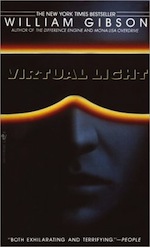
William Gibson’s Bridge Trilogy divides California into the usual twin axes of SoCal and NorCal. Earthquakes have destroyed much of SF and Tokyo, and Gibson jumps back and forth between NorCal and Japanese culture. The main setting of each of the Bridge Trilogy books is a shantytown that’s developed on the Bay Bridge, which became a shelter for people whose homes were destroyed in the earthquake. Virtual Light centers on the class divisions between life in the shantytown and the world of rich corporations, with a bike messenger named Chevette acting as a conduit between them. Idoru plays with the cross-cultural exchange between Japan and what’s left of NorCal. Finally, All Tomorrow’s Parties is a book of linked stories, one of which features Chevette, who brings a media sciences student into the shantytown so she can make a documentary on “interstitial communities.”
Always Coming Home—Ursula K. Le Guin
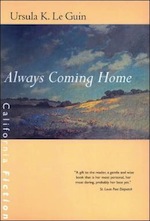
Ursula Le Guin grew up in Berkeley and spent her summers in the Napa Valley, raised by an anthropologist father and a biologist mother. With Always Coming Home she wrote a hybrid novel/anthropological study telling the story of the Kesh people, who live in the Valley of Na. The Kesh are rural and spiritual, with towns that are more like what we’d call villages. Their civilization exists so long after ours that almost no traces of us still exist, and we are referred to as “backwards-heads” because they think our approach to life was so, well, backwards.
The Immortal Secrets of Nicholas Flamel—Michael Scott
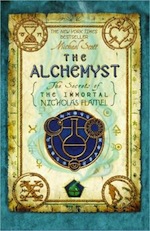
While Nicholas Flamel supposedly died in Paris in 1418, in truth he had already discovered the secret to immortality, and has spent centuries in hiding. So, naturally, where would a medieval Parisian want to live in the modern day? San Francisco! Which is where he meets twins Sophie and Josh Newman, both naturally gifted magicians, who work in a coffee shop and a bookstore respectively while living in SF for the summer. While the series hops across the globe from city to city, San Francisco remains a magical home base.
It Came From Beneath the Sea
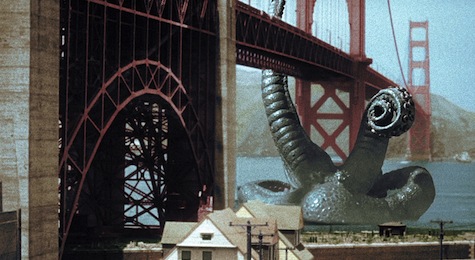
This 1955 monster movie is a pretty standard (awesome) 1950s monster movie. Giant Cephalopod attacks fishing boats and submarines, square-jawed male scientist and gorgeous lady scientist argue about how to blow it up, whether girls are allowed to do SCIENCE, tampering in God’s domain, etc. But then, for reasons that are not made entirely clear, the Cephalopod flies into a rage and attacks the Golden Gate Bridge! AAAAH!!! Will Science prevail???
Star Trek
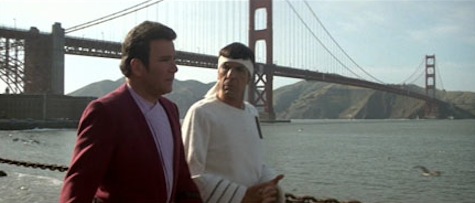
As this Slate article pointed out, Star Trek is primarily concerned with the far reaches of space, but they left their hearts in San Francisco. San Francisco is the site of Starfleet Command and Starfleet Academy. When the core crew has to go to 20th Century Earth to pick up a pair of humpback whales, where do they go? San Francisco. When “John Harrison” wants to BAMF in and destroy some shit, where does he go? San Francisco! Wired reflects on the importance of SF to, um, SF, in this article on Gene Roddenberry’s love of the city. Roddenberry used the progressive ideals of NorCal to inform his vision of a future society that had moved past old hatreds to embrace science, culture, equality, and a search for new life in the stars.
Blade Runner
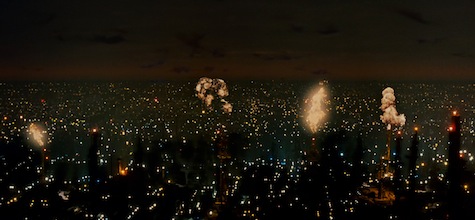
It’s honestly difficult for me to even write about Blade Runner. It’s one of those movies I saw when I was tiny, and it completely informed my idea about THE FUTURE, and I have a weirdly visceral reaction to it. Even finding images for this post was hard, because trying to pick just one felt impossible. The first time I came to New York, I was on the Jersey Turnpike, and saw Newark shooting up spouts of smoke and flame, and (even though I should have been thinking about Johnny Mnemonic) all I could think was, and I’m quoting my brain here: “BLADE RUNNER!!! I’M IN THE FUTURE!!!” After I calmed down, I visited The Museum of the Moving Image and stood in awe of the model of the Tyrell Corporation building, but even knowing that the building is only about waist high on me, those opening shots of the city still fill me with an awe and dread that I can’t shake.
Radio Free Albemuth / VALIS / The Transmigration of Timothy Archer— Philip K. Dick
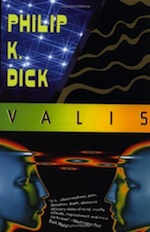
I’m giving Philip K. Dick his own section apart from Blade Runner, because PKD tackled many different aspects of Californian life in his later books. In Radio Free Albemuth, and its rewrite, VALIS, Dick transformed the mundane details of his life in L.A. into paranoid dystopias, with secret messages coming cutting through the constant blare of Los Angeles. His version of the city feels like a throughline from 70s noir, with a healthy dash of 60s psychedelia. Several characters work at record stores. Aliens may be communicating with people, but also it might be God, but also they might be the same thing. Dick cast two slightly warped versions of himself (one named Phil) in VALIS, and Phil’s buddy Kevin is based on his real-life friend K.W. Jeter. The Transmigration of Timothy Archer connects modern (well, 1980s) California to ancient Judea through the character of Timothy Archer, Bishop of California, who becomes intensely interested in Gnostic writings from the Second Century B.C.E., and is subsequently investigated for heresy. Once again, Dick used a real Californian as the basis: the life and obsessions of his friend James Albert Pike, the Episcopal Bishop of California from 1958 – 1966. (Pike, by the way, fought for racial desegregation, the ordination of women, and LGBT rights. He also helped bring down Joseph McCarthy. No genre element there, I just like to point out that PKD had some really cool friends.)
Wild Shore Triptych—Kim Stanley Robinson
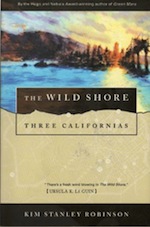
Kim Stanley Robinson gave Orange County, California three possible futures with the “Three Californias” books. The first, The Wild Shore, was Robinson’s debut novel, and gives us a rural, agrarian, post-nuclear California, whose society is hindered by sanctions imposed by the U.S.S.R. The Gold Coast gives us an urban dystopia, in which L.A. has sprawled over most of the southern part of the state, and created a society of endless condos, freeways, and malls. Finally, the Campbell Award-winning Pacific Edge explored the possibility of a working utopia, set in El Modena, California in 2065, which was created by responsible ecological philosophy.
Snow Crash—Neal Stephenson
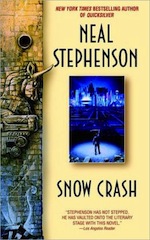
When they’re not in the Metaverse of trying to thwart horrifying viruses, Hiro Protagonist, Y.T., and the rest of Snow Crash’s cast spend their days dodging around a city that used to be Los Angeles, now divided into “nation corporations” like Mr. Lee’s Greater Hong Kong and Narcolumbia, and themed “burbclaves” such as The Farms of Merryvale and Pickett’s Plantation. Each of these organizations has their own rules and customs, with many of the burbclaves being rigidly racially segregated.
Buffy the Vampire Slayer / Angel
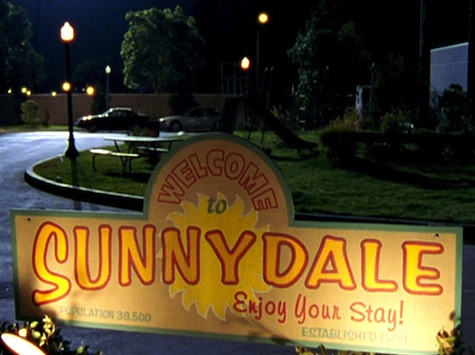
Buffy the Vampire Slayer, both the movie and the series, initially relied on the inherent humor of a perky, blonde, typically Californian cheerleader facing off against vampires and demons. Buffy in the movie was a bitchy mean girl who embraced the shallow mall culture of LA, and even once Whedon was able to add more nuance to the character in the series, the gag of vampires trying to deal with sunny southern California proved to be a bottomless joke well. Angel, meanwhile, played with LA noir tropes for the first season, complete with decrepit, shadowy detective’s office/apartment, and the occasional femme fatale. When the staff moved into the Hyperion Hotel the show dealt with some of LA’s seedier history, particularly in the episode “Are You Now or Have You Ever Been,” when the agency had to wrestle with the Hyperion’s literal ghosts.
Demolition Man
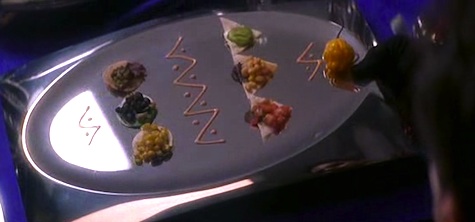
This film tells the tale of a doomed attempt to turn SoCal into NorCal. In 2010 a Great Earthquake destroys a large part of California, which causes Los Angeles, San Diego and Santa Barbara to merge into a pseudo-utopia called San Angeles. By 2032, when the film takes place, weapons, violence, sex, cursing, basically all the fun stuff, has been outlawed. Somehow, over the course of one generation, police have completely lost the ability to handle any crime. When evil Wesley Snipes comes out of cryofreeze and attempts to assassinate Denis Leary, the cops have no choice but to thaw out Sylvester Stallone. Stallone gets to conk Sandra Bullock on the head to protect her, Snipes is defeated, plots are revealed, and everyone decides maybe violence isn’t so bad after all. Oh, and Taco Bell was the only restaurant to survive the franchise wars.
Rainbows End— Vernor Vinge
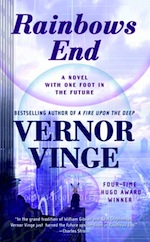
Takes place in San Diego of 2025. While no specific cataclysms have impacted the Golden State, there has been at least one terrorist attack in Chicago, and a character makes mention of a nuclear attack five years before the events of the novel. The books is more immediately concerned with jumps in medical technology, and the rise of alternate realities. The medical advances have allowed for the reversal of Alzheimer’s, and main character Robert Gu is slowly re-learning how to live in a changed world as his symptoms abate. One of the challenges he faces is that his own Luddite nature is at odds with younger peoples’ comfort in virtual realities and the “Belief Circles” that support different themed worlds.
Mendoza in Hollywood—Kage Baker
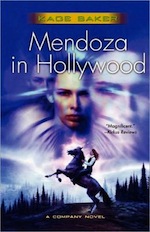
The third novel in Kage Baker’s time travel series about The Company follows Mendoza, cyborg botanist, as she confesses to a murder and muses about her history. Her assignment was to collects plants in mid-19th-Century Los Angeles area before a massive drought hits Southern California. Along the way, however, she is reunited with her resurrected lover, and then murders those responsible for his (apparent) second death. As she tells her story, she muses on the history of California, its plant life, and finally begins to wonders about the sudden significance of Santa Catalina Island to The Company’s plans. Baker, a native of Hollywood, devotes much of the novel to a celebration of California’s nature and lore.
Parable of the Sower / Parable of the Talents—Octavia E. Butler
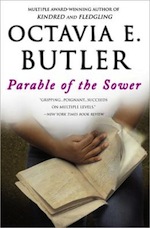
Octavia E. Butler’s Parable books are set in a post-government-collapse California. Hyperempathic Lauren Olamina lives in a gated community in L.A., trying to survive in a society that has resorted to anarchy. An invasion drives Lauren and a small group of survivors north toward San Francisco, where they found a new community. Lauren also begins to develop a new religion, called Earthseed, which is compromised by religious fanatics in the second book, Parable of the Talents.
California Bones—Greg van Eekhout

In California Bones, Los Angeles is the overcrowded capital of the Kingdome of Southern California, and a rare type of magic thrives. When Daniel Blackland was six, he ingested his first bone fragment, a bit of kraken spine plucked out of the sand during a visit with his demanding, brilliant, and powerful magician father, Sebastian. When Daniel was twelve, he watched Sebastian die at the hands of the Hierarch of Southern California, devoured for the heightened magic layered deep within his bones.
Now, years later, Daniel is a petty thief with a forged identity. Hiding amid the crowds in LA, Daniel is trying to go straight. But his crime-boss uncle has a heist he wants Daniel to perform: break into the Hierarch’s storehouse of magical artifacts and retrieve Sebastian’s sword, an object of untold power. For this dangerous mission, Daniel will need a team he can rely on, so he brings in his closest friends from his years in the criminal world. Moth, who can take a bullet and heal in mere minutes; Jo Alverado, illusionist; the multitalented Cassandra, Daniel’s ex; and, new to them all, the enigmatic, Emma. The stakes are high, and the stage is set for a showdown that might just break the magic that protects a long-corrupt regime.
Earth Girls are Easy
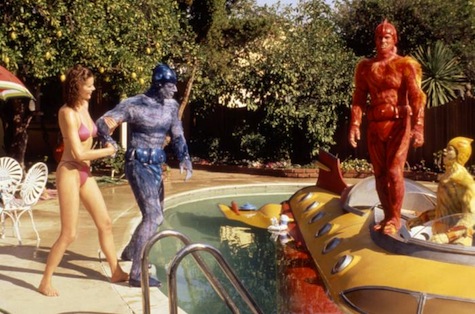
Recently heartbroken Geena Davis is floating in her San Fernando Valley pool when three furry aliens crash land looking for babes. She takes them to her salon co-worker, Candy Pink, shaves them, and discovers they’re Jeff Goldblum, Damon Wayans, and Jim Carrey. She and Jeff Goldblum celebrate their instant chemistry by clubbing in various neon L.A. locations, and Candy Pink breaks out into a beach blanket musical number about the joys of being blonde. It’s amazing.
Alien from L.A.
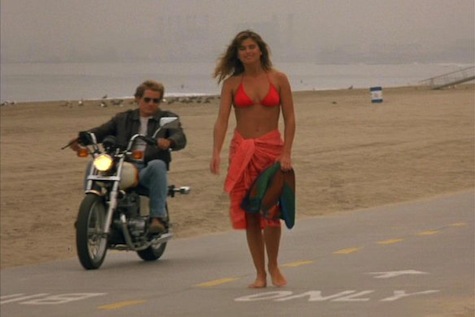
Personal anecdote time! This was the first episode of Mystery Science Theater 3000 I ever saw. Mike and the Bots mocked Kathy Ireland’s squeaky voice (while defending her character and calling her boyfriend a jerk) and made a lovely obscure reference to the death of John Belushi. I was hooked. Now, as for the film, it mostly takes place in a weird underground pseudo-Australian dystopia, but Kathy Ireland is from L.A., which is evidenced by the fact that everyone thinks she’s a hideous monster because she wears glasses. So, that’s California enough for us. Look, she’s on a beach!
Her
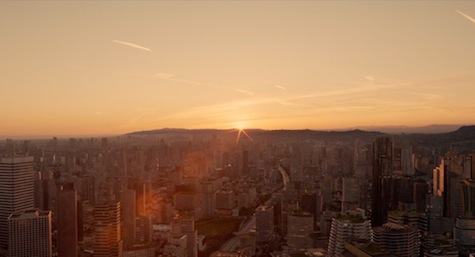
L.A. is often coded as a nexus of alienation, materialism, greed, but in Spike Jonze’s Her, it becomes a magical, vibrant city. We’re in the near-future, which we know because pristine 3-D advertising floats in the air, and because everyone is aggressively normcore. However, the best and most subtle bit of future shock only sets in after a few minutes: no one drives. L.A. has revolutionized its subway system, and now everyone uses trains or walks. In fact, Theodore’s favorite weekend activity is wandering his city on foot. His love for L.A. infuses the film, to the point that after the infamous sex scene, we don’t get a shot of Joaquin Phoenix’s face, or even the phone with Samantha’s name scrolling. Instead we get a sweep over the Los Angeles skyline as night gives way to a beautiful dawn.
Leah Schnelbach loves any state that can contain both Starfleet Academy and a moon of Endor. Tweet at her!










